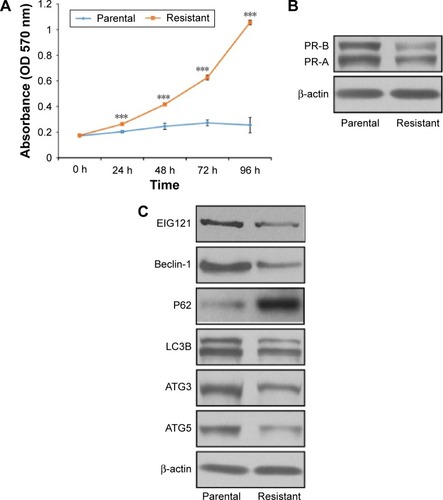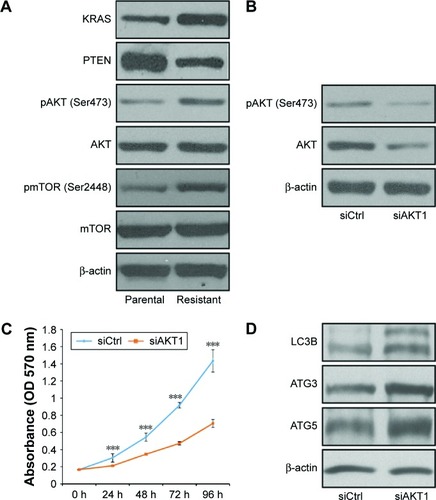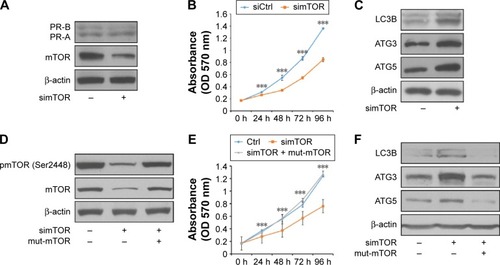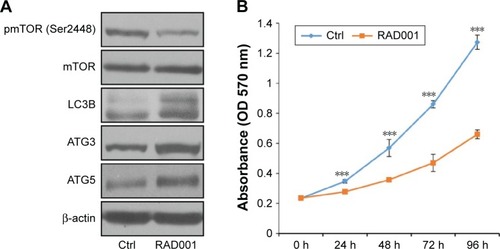Figures & data
Figure 1 Progestin-resistant cells show increased cell growth and decreased autophagy.
Abbreviations: MTT, 3-(4,5-dimethylthiazol-2yl)-2,5-diphenyltetrazolium bromide; PR, progesterone receptor; PR-A, progesterone receptor isoform A; PR-B, progesterone isoform B; OD, optical density; h, hours.

Figure 2 Progestin activates the PI3K/AKT/mTOR pathway in progestin-resistant endometrial cancer cells.
Abbreviations: PI3K, phosphatidylinositol 3-kinase; AKT, protein kinase B; mTOR, mechanistic target of rapamycin; MTT, 3-(4,5-dimethylthiazol-2yl)-2,5-diphenyltetrazolium bromide; OD, optical density; Ctrl, control; h, hours; pAKT, phosphor-AKT; pmTOR, phosphor-mTOR; siAKT1, short interfering RNA targeting AKT1; siCtrl, short interfering RNA control with scrambled sequence.

Figure 3 Phosphorylation of mTOR is sufficient and necessary for cell growth in endometrial cancer cells by regulating autophagy.
Abbreviations: mTOR, mechanistic target of rapamycin; PR, progesterone receptor; MTT, 3-(4,5-dimethylthiazol-2yl)-2,5-diphenyltetrazolium bromide; OD, optical density; Ctrl, control; h, hours; pmTOR, phosphor-mTOR; siCtrl, short interfering RNA control with scrambled sequence; mut, mutant; simTOR, short interfering RNA targeting mTOR.

Figure 4 RAD001 inhibits proliferation in progestin-resistant endometrial cancer cells by inducing autophagy.
Abbreviations: mTOR, mechanistic target of rapamycin; MTT, 3-(4,5-dimethylthiazol-2yl)-2,5-diphenyltetrazolium bromide; Ctrl, control; OD, optical density; h, hours.

